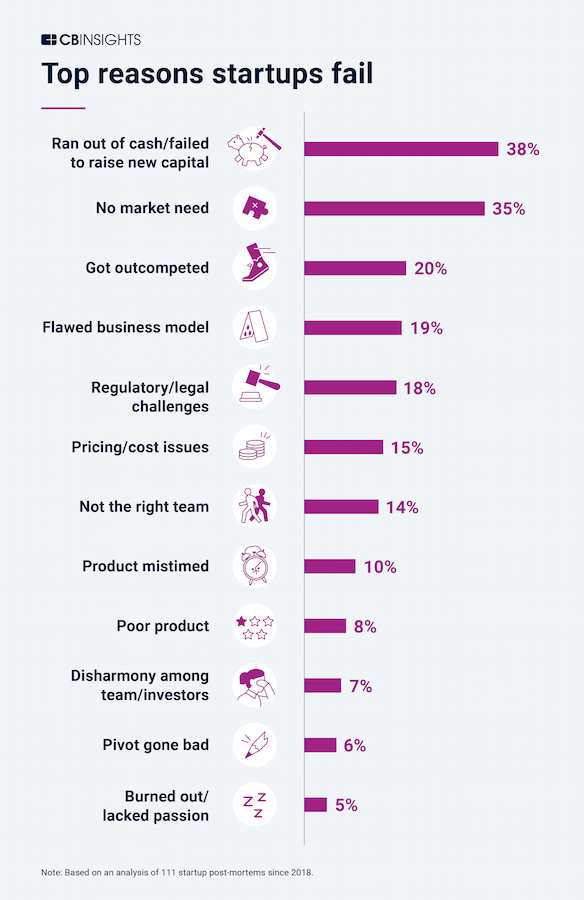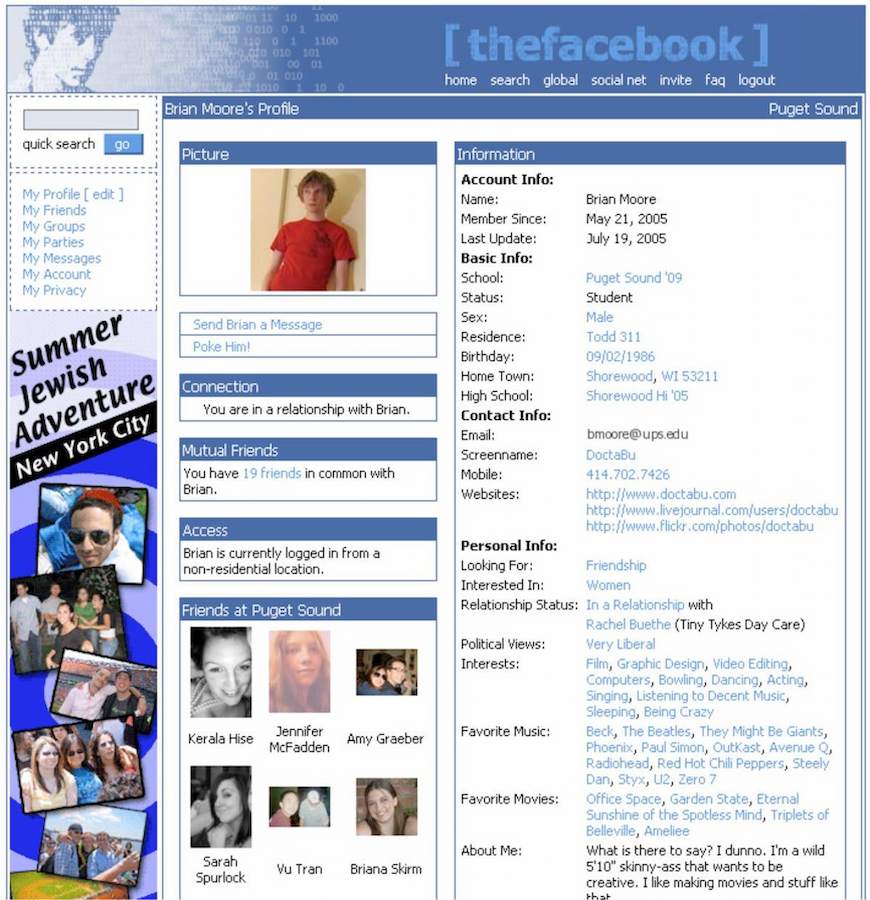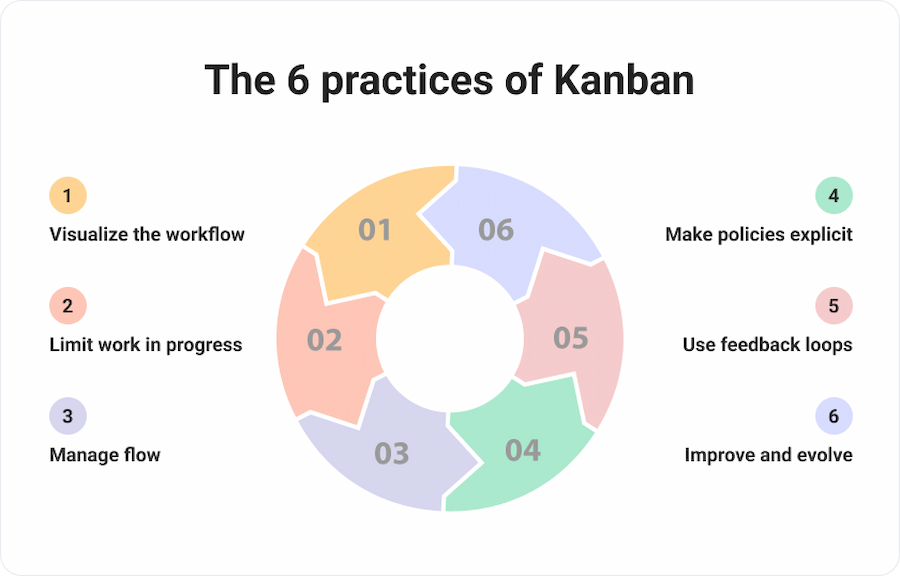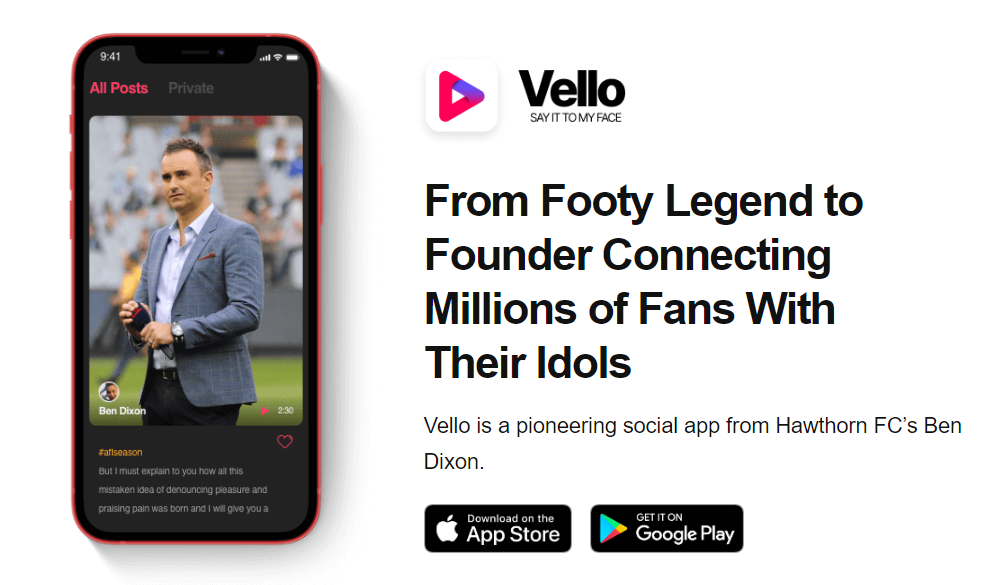How to Make a Social Media App: Quick & Cost-Smart Steps

Did you know that the average smartphone user spends 2 hours and 31 minutes daily on social platforms?

Source: Meltwater via DataReportal
Undoubtedly, people love spending time on social media. No wonder creating a social media app has become a lucrative business opportunity for many. In 2022, the global social app market was valued at $49.09 billion.
But with Facebook and Instagram dominating the field, it will take a special process to create a social media app that thrives in this competitive market.
Whether you’re an experienced app developer or a first-time entrepreneur, this article provides insights and strategies for building an app that can effectively compete with social network giants, helping you carve out your niche in the market.
Read on to discover a fresh take on social media app development, the role of the minimum viable product in cost management, along with related insights like:
- Major social app categories to gain inspiration from
- How to make a social media app from ideation to market expansion
- How you can work with us to simplify the design of your social media app
- How you can take advantage of our full-fledged social app development method
- Frequently asked questions about creating social media apps
Let’s jump right in with the basics!
Popular Types of Social Media to Gain Insights From
Sudden bursts of inspiration are rare.
To help you generate that idea for your own social network app, I’ve compiled a list of the different types of social networking apps in the market today. Check out the list below to learn about these categories and the value they offer:
- General social networks. These are the most popular social networking apps that allow users to connect with friends, family, and people from around the world. Examples include Facebook, Instagram, and X (formerly Twitter).
- Microblogging platforms. These social networking apps enable users to share short-form content, such as text updates, photos, and videos. Examples include X (formerly Twitter) and Snapchat.
- Blogging and publishing platforms. Users can create and publish long-form content on these social platforms. Tumblr and Medium are examples of platforms that offer this functionality. People can create pages with images and articles of varying lengths when using both platforms. Users can also follow others with similar interests and interact with each other.
- Media sharing networks. These social networking apps allow users to share short or long-form video content. Examples include YouTube and Vimeo.
- Messaging apps. These social networking apps allow users to communicate in real-time, one-on-one, or in groups. Examples include WhatsApp, Facebook Messenger, and Snapchat.
- Professional networking apps. These social networking apps are designed for professionals to connect, share job opportunities, and network. Examples include LinkedIn and Xing.
- Niche social networks. These are social networking apps designed for specific audiences, interests, or hobbies. Examples include Goodreads for book lovers, Strava for athletes, and Nextdoor for local communities.
As you can see, Facebook’s presence has not fazed other companies in their quest to build their own online social networks. Like these tech startups, you can also find your place in the sun by knowing the most optimal process for social media app development, which I will discuss next.
How to Make a Social Media App: 5 Resource-Saving Steps to a Successful Social Platform
Whatever you’ve read in the past, this is not your typical social media app development process.
We at Appetiser Apps have thoroughly crafted this method through years of experience designing and developing apps for various local and international startups and organizations.
Through the following process, you can develop an original social media app while:
- Spending less energy coming up with the right app concept
- Increasing your chances of getting investor funding
- Shortening the time your app will reach your target market or audience
- Keeping app development costs reasonable
#1 Conceptualize your app based on focused market research and competitor analysis
Necessity is the mother of invention, and new necessities emerge as time passes.
After all, cars were more luxuries than necessities back in the day.
Therefore, the key to conceptualizing the next successful social app is becoming aware of what people actually need when forging social connections online.
And the most effective way to discover what people need is through focused market research.
Sounds like an overwhelming task?
But what if I tell you that you do not have to spend too much time and money handing out surveys to people nationwide or across multiple countries?
One of our product managers suggests looking for a small group in one city, industry, or community to validate a need:
“Find people who experience the problem, and ask them about how they are currently dealing with it. Then, use their answers to design an app that solves the problem.”
So for instance, if some of the people in your neighborhood need a less toxic social media environment, then you can build your concept around this necessity. This is what EvrSo was able to do.
EvrSo is a social media app that is not your typical “post whatever you want” platform. It’s a unique social network that encourages people to pursue wholesome goals.
To learn more about this innovative social media app, check out the EvrSo case study.

Here’s another interesting fact: Around 58% of the global population in 2022 are social media users. This means that about 48% aren’t active users of social platforms.
Though these statistics are global in scale, you can use these figures as your guiding principle when conducting targeted market research.
Find out why some people in your chosen city or community don’t use social media apps (if applicable). Keeping an eye out for uninterested groups provides opportunities to develop your app concept further or create an entirely new one.
Aside from feeling the pulse of your target audience or market, you should also look into what the other social network apps, including niche social media apps, are doing and see what gaps in the market you can fill with your product. Read user reviews, feedback on those apps, and industry reports related to these competitor apps.
For example, if some social apps in the market don’t have easily accessible features for special interest groups like airplane model hobbyists, perhaps your app can fill this niche.
Essentially, a successful app idea lies somewhere between your focused market research and the study of competitor apps. An app concept derived from research on rival platforms and the target audience near you has a higher chance of fulfilling actual market needs, which is vital given that hundreds of startups fail mainly because of product-market mismatch.

Source: CB Insights
#2 Define your app’s basic features
Once you have identified an opportunity in the market, you should define your social media app’s MVP or “minimum viable product” features.
An MVP is a version of your app with just enough features and functions to satisfy early customers. Aside from being an actual product, an MVP is also a tool for testing whether a critical mass of potential users want or need your social media application.
In other words, your MVP is essentially the bare-bones version of your social app that should include only those features that are must-haves for it to succeed.
Facebook is a good example of how to make a social media app using the MVP concept.
Some industry observers argue that Facebook triumphed over its predecessors due to its less cluttered interface, more engaging features, and a wider range of apps.
But before all the features typical of the social giant became popular, Facebook was barely a website with photos of everyone living in the dorm of Mark Zuckerberg and his friends.
And even when Facebook was already launched and has gained traction over other popular social media platforms, its improvements were added gradually.
If you’re among the early adopters of Facebook, you might remember it looking like the image below — far from the look and feel of the social giant we know today.

Source: CNET
Starting with your social app’s core and essential features will help ensure your development costs stay within budget. It will also give you a clear focus on which features need priority attention when launching the app.
But how do you identify your app’s core?
If you consult us directly on how to make a social media app, we will tell you that the best way to know the core features you will incorporate into your app is by defining its main purpose. What does it primarily aim to do? Your app’s purpose is its core MVP feature.
For instance, is your app meant to create professional connections for specific groups like doctors or tradespeople?
In such a case, you can skip media-rich features like video sharing or colorful emojis since your main objective is to help people in an industry form networks to enhance their careers. You may add video functionalities later when your app has gained a sizeable following or when your users demand them.
In novel concepts, the core feature is often its niche or a unique aspect or function of the app that sets it apart from similar apps in the market.
For a more specific example, let’s look at Instagram.
If this social media platform is still in the MVP stage, its core feature will be sharing photos.
While it’s nice also to have a video content feature, it isn’t necessary at the early stage of development.
Back when Instagram was started, no other platform enabled users to post photos like the app does. Hence, Instagram could fulfill its purpose at the time even if video content wasn’t a feature yet.
What about the essential features of social networking apps?
Essential social media features are the baseline functions necessary to produce the high-quality user experience expected from a social networking platform.
In the proof of concept or prototype stage, demonstrating your app’s core feature is often enough. But since a minimum viable product is ready for launch, aside from the core feature, your social networking app, at the very least, should also have the following features:
- User profiles. Users should be able to create a profile with basic information such as name, username, bio, and profile picture.
- Social connections. Users should be able to connect with other users and form social networks. This may include following, friending, messaging, or liking other users’ content.
- Content creation and sharing. Users should be able to create and share content in various formats, such as text, photos, videos, or audio (depending on your social app’s type and core function).
- Notifications. Users should be notified of relevant events, such as when someone likes or comments on their content or when someone they follow shares new content.
- News feed. Users should be able to stay engaged and informed about the latest updates, news, and trends within their social network and beyond.
- Search. Users should be able to search for other users, content, or hashtags within the app.
- Privacy and security. Users should have control over their privacy settings and be able to choose who can see their content or interact with them.
#3 Design your app
Once your MVP has been established, it’s time to design your app.
At Appetiser, we pay keen attention to the design stage. We believe that getting your design right is the most crucial step to app development, as this is where apps fail or succeed.
And as you will learn later, app designs can potentially attract funding from investors.
Our design stage involves two major phases: sketching and wireframing.
Sketching
Sketching is an early-stage process in app development where our designers use digital tools to create rough design illustrations that reflect your product’s general idea and main sections. This process allows you to explore different design ideas, layouts, and user flows before investing time and resources into coding.
In our experience, your requirements can change significantly once the app development process starts. Making as many necessary modifications before coding begins can greatly simplify the process and minimize expenses.
Sketches can also serve as a useful communication tool between designers and developers, helping to ensure that everyone has a clear understanding of your app’s design and functionality.
Once you’ve approved the sketch, it will also serve as a basis for scoping your project and creating a ballpark figure for developing your social media app. I encourage you to read our comprehensive guide on app development costs to gain more insights into this matter.
Pro tip: Sketching an app is an iterative process. This means that you will likely need to create multiple versions to refine your ideas and incorporate feedback from others. Don’t be afraid to make changes and try out new ideas as you go!
Wireframing
After project scoping is wireframing. In creating wireframes, our designers visually represent the user flows and consider additional screens and sections for your social media platform.
The primary goal of wireframing is to create an interactive prototype that designers, developers, and stakeholders use to evaluate your app’s functionality, user flow, and overall structure. It also helps us identify potential usability issues and make necessary adjustments before investing resources and time into the development process.
You’ve just learned about the general principles of sketching and wireframing. To know how these design processes can be tailored to your social app’s design project, book a free consultation with us.
Designs as investment magnets
A well-thought-out prototype design is a powerful tool for gaining investor funding for a new social mobile app. We’ve seen this happen for numerous clients, including Good Empire.

Founder André Eikmeier followed his passion for pioneering a social challenge app to help people and the planet.
Using our quality design prototype, the startup inspired thousands of investors to shell out $1 million to fund the app’s development. The unique social media platform also garnered rave reviews in the app stores without wasting too much time and resources during full development.
Check out the Good Empire case study to learn more about the startup’s inspiring journey to app success.
#4 Develop your social networking app
This stage is where the actual coding and programming happen. Developers can use numerous methodologies and frameworks to manage the process. For further insights, I encourage you to check out our article about software development methodologies.
At Appetiser, we adopt the Kanban development method. This approach is based on the principles of visualizing work, limiting work in progress, and continuous improvement. We chose this method to give our clients the power to control the project and their budget.

Source: Bordio
Here’s how it works:
- First, we scope your MVP feature requirements into Kanban months and develop a roadmap.
- Then, we build a team to work with you on developing your app. The size of your team will depend largely on the complexity of your project features and requirements.
- Following the priorities set on the roadmap, your development team will implement the features per Kanban month. You have full control of how much you would like to develop monthly. You can scale up, down, or pause anytime — we will not lock you in.
- Features that spilled will be moved from the current to next month (roadmap adjustments).
- Once Kanban months in the MVP scope are completed, your app will be ready for launch.
Our in-depth guide on the app development process explains the Appetiser workflow in greater detail.
#5 Launch, market, and maintain your social media application
Creating a great social networking app is only half the battle. To succeed, you must focus on marketing, user acquisition, and user retention.
Having a solid marketing strategy is crucial to reach your target audience and encourage them to download and use your social app. Without robust marketing, your app will remain unseen, like a dusty book unread by library patrons.
Aside from marketing, you need to retain users effectively through an effective and cost-smart app maintenance program. If you keep your application in tip-top shape and maintain its quality performance, you will be better able to keep users loyal to your social platform.
Here are some steps you can take to launch, market, and maintain your social media app:
- Define your target audience. Identify who you want to use your app and their interests and needs. This will help you tailor your marketing efforts to reach the right people.
- Build buzz before launch. Sparking interest around your app before launch can help generate excitement and interest. You can create a landing page, run a pre-launch campaign, and reach out to influencers and media outlets.
- Offer incentives. Offering discounts, free trials, or exclusive access can help encourage people to download and use your app.
- Optimize for app store visibility. App store optimization (ASO) is the process of optimizing your app’s listing on app stores like Google Play and the App Store. ASO essentially involves optimizing your app’s icon title, description, keywords, and visuals to improve visibility and attract more downloads.
- Partner with other brands: Consider partnering with influencers, sponsoring events, or running joint campaigns with brands or businesses that share your target audience.
- Collect and analyze data: Use analytics tools to track user behavior, engagement, and retention. You can also monitor user comments, feedback, and ratings. Use all this information to make data-driven decisions to maintain your app and enhance its marketing strategy.
Following these steps can increase your chances of launching, marketing, and maintaining a successful social media app. However, knowing how to make a social media app while having the skills to market and maintain it requires continuous strategic thinking, effort, and attention.
You must keep up with industry trends and adjust your strategies to stay ahead of the competition.
App marketing and maintenance are among the areas where Appetiser stands out.
Our team has a unique combination of growth marketing and technical expertise that can provide you with that key advantage in app development. We have a full stack of tools and skills that enable us to create a fantastic product, optimize it, maintain it, and promote it effectively.
Our approach goes beyond designing and developing an app—we also focus on driving growth and engagement by implementing proven marketing strategies. When you work with us, you will collaborate with strategists, designers, and marketers to achieve the best results for your project.
Our developers will also ensure that you can maintain your app’s level of performance while managing app maintenance costs.
With our expertise in app development and growth marketing, we can help turn your app into a success story.
It’s all a matter of strategy
The social media app development market is undoubtedly highly competitive and constantly evolving, with numerous players vying for user engagement and attention. However, this does not necessarily mean that the market is completely saturated.
With the rise of new technologies and changing user preferences, there is always room for innovation and differentiation. If you have a unique idea and a solid execution plan, there is still potential to carve out a niche in the social media app market.
Remember to prioritize user experience, stay up-to-date with the latest trends, and be agile in responding to user feedback.
A new social media app may require more effort and creativity to stand out from the crowd, but with the right approach and mindset, you can still succeed. And if you need help drawing the ideal strategy, reach out to us at Appetiser. Together, let’s turn your vision into action!
Frequently Asked Questions
How do you create your own social media app?
There are 5 simple steps to creating your own original and successful social media application:
- Conceptualize your app based on focused market research and competitor analysis
- Define your app’s basic features
- Design your app
- Develop your social networking app
- Launch, market, and maintain your social media application
Two critical linchpins of this five-step process are conducting market research effectively and enlisting the help of the right app design and development agency. Properly performing these two will enable you to carry out the five-step process with the least effort and resource expenditure, massively increasing your social app’s chance of long-term success.
Can one person create a social media app?
Yes, it’s theoretically possible for one person to conceptualize and code a social media app.
But in a market where 15 social apps corner most of the world’s users, creating a successful social media platform takes more than single-person ideation and programming.
Strategies involving design, growth, and maintenance are also necessary to maintain a competitive edge. That’s why many individuals and organizations who want to develop social media apps build in-house teams, hire freelancers, or outsource their projects to app agencies. The latter option is the most optimal if you want speed-to-market and sustainable success.
How much does it cost to start a social media app?
Though full-fledged social app development costs around $30,000 to $300,000, you can start a social media app for as low as $15,000. Though this relatively small figure only covers app design, a design asset can attract many investors who can help pay for app development expenses.
Case in point: Vello. This social media startup invested just around $15,000 for app design. Eventually, the company was able to use this design asset to convince investors to bet $600,000 of their money for the app’s full-fledged development project.

Is creating a social network app for Android different from making an app for IOS?
Developing a social media application for Android and iOS differs because of each operating system’s unique ecosystems, coding languages, and design standards.
To get the best out of each operating system, we highly recommend developing one native app for Android and another for iOS.
Developers use tools like Android Studio and languages such as Java or Kotlin to build a social platform for the Android operating system. While the process offers flexibility, it may encounter challenges associated with device fragmentation. For instance, one device with an older version of Android may not run the same social app as seamlessly as an updated smartphone.
On the other hand, iOS development relies on Xcode and Swift, benefiting from a more consistent device environment and potentially yielding higher user revenue. However, an iOS social media app must adhere to stringent App Store regulations.
If you want both operating systems for the price of one, you can always develop hybrid apps. With one hybrid social app, you can service both Android and iOS users. Yet, since the hybrid approach has some drawbacks, we would still recommend developing native apps, especially if you intend for your social platform to be rich in features after it gains massive momentum in the market.
For a deeper dive into the subject, check out our article comparing native and hybrid applications.
How do social media apps make money?
Social media apps make money in a variety of ways, even if users don’t have to pay for them.
Free apps make money mainly through in-app advertising. However, if you don’t want to rely too heavily on advertising for app revenue, you can earn through in-app purchases.
One interesting case for in-app purchases is Snapchat, which allows users to buy “clothing” and “shoes” for their avatars. Even big brands like Nike and New Balance have their fashion selection in the app.
Whatever social application you want to develop, you can explore linking up with small businesses in your area and asking them to integrate their ecommerce products with your social app. Then, you can work with app agencies to see if this in-app purchasing model is feasible and sustainable.

Jane Eslabra has 14+ years of experience producing content across traditional and digital platforms. She channels her strong passion for fostering tech startup growth through knowledge sharing.


